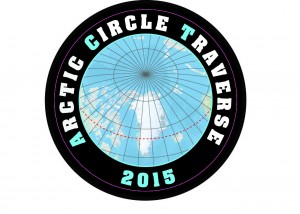Two years ago in late May of 2013, I recall sitting at a tiny desk in the Kangerlussuaq International Science Support (KISS) station in Southwest Greenland. Our team had just finished an incredibly difficult and extremely productive field season on a long snowmobile traverse across the southern Greenland ice sheet. I had trouble sleeping that night, and was posting my thoughts on our hastily assembled blog at the time. I recall vividly the sense of obligation and urgency I felt.

ACT-13
From ACT-13’s “Success! The work is half-finished”:
I’m sitting at a tiny wooden desk as the midnight sun illuminates my window on the second floor of the KISS (Kangerlussuaq Int’l Science Support) station in southwest Greenland. I have trouble sleeping without the noise of wind—my second day off the ice and I still find the indoor silence disconcerting—so I occupy my waking hours wading through a month of backlogged e-mails. A recent press release from my parent institution CIRES announces the results of a recent study by a fellow colleague and friend, Dan McGrath, who states that Greenland’s dry snow zone will likely disappear within the next several decades if current warming continues. It’s a result not unexpected to glaciologists here. Among other things, he notes that “more work needs to be done to untangle these impacts.”
ACT-13 Team

Katabatic winds, ACT-13
It’s now almost two years later, and an exhausting two years it’s been. The measurements we took have helped us characterize some of the vast and rapid changes happening in the interior of Greenland’s ice, just under the surface. The instruments we installed still transmit daily results from the frigid interior of Greenland. These measurements help illuminate one of the largest sources of uncertainty in measuring mass changes of the Greenland ice sheet. A year ago we worked feverishly to outline the importance of this work in preparation for NASA’s ICESat-2 satellite mission (scheduled for launch in 2017) that, when successful, will provide the world’s most detailed and extensive measurements ever collected of the Greenland and Antarctic ice sheets (among other things). Our work will significantly narrow the signal correction uncertainties from ICESat-2’s flagship ATLAS instrument, allowing it to achieve the extraordinary precision for which it was designed. Our case was convincing to NASA, who took us up on the offer. The work begins anew.

Installing the EKT station tower, 2360 m a.s.l., May 2013
Our mission is dubbed “FirnCover“, an acronym (as all things are) for “Firn Compaction Verifcation and Reconnaissance.” Our Spring Campaign is the Arctic Circle Traverse 2015, or ACT-15. Our mission (should we choose to accept it) is to help NASA and the scientific community nail down one of the largest sources of known uncertainty in measuring the mass of the Greenland ice sheet from space, now and for years to come.
It’s proven a tremendous effort already, and it’s only just ramping up now. I received 15 e-mails in my Inbox while writing this. Two more of our shipments just arrived at the mail room. We have work to do! I hope you’ll join us as we bring you along for the ride. Onward…
– Mike

